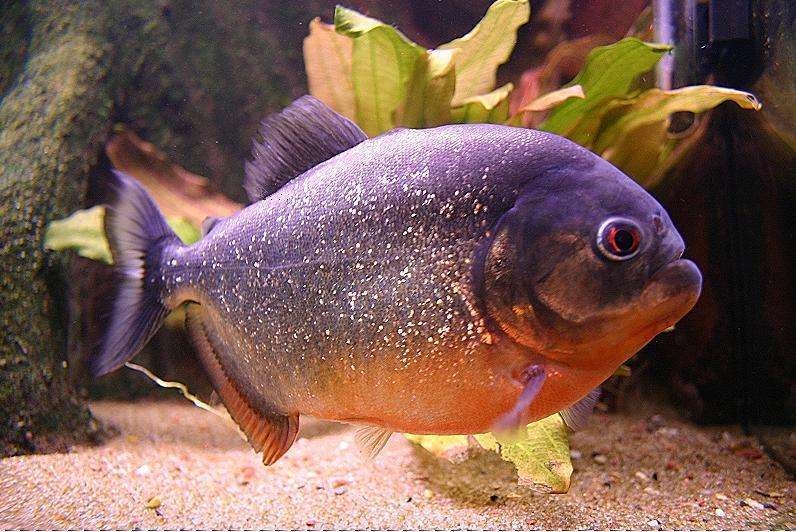When one thinks of the Amazon River and its infamous inhabitants, the image of ferocious piranhas often comes to mind. Among these remarkable fish, the sand piranha stands out not just for its predatory nature but also for its unique adaptations to life in the river's sandy bottom. This article delves into the fascinating world of the sand piranha, exploring its behavior, habitat, and ecological significance. Through vivid descriptions and engaging insights, we aim to shed light on this captivating species that plays a crucial role in the Amazon's aquatic ecosystem.
As we embark on this journey, we will uncover the intricacies of the sand piranha's life cycle, feeding habits, and interactions within its environment. Additionally, we'll address common misconceptions surrounding this species, as well as its importance to local communities and the broader ecosystem. The sand piranha, with its remarkable adaptations, serves as a testament to the resilience and complexity of life in one of the world's most biodiverse regions.
With its razor-sharp teeth and aggressive feeding behavior, the sand piranha can evoke fear and intrigue in equal measure. However, understanding its role within the ecosystem can help dispel fears and promote conservation efforts. Join us as we dive into the depths of the Amazon River to explore the life of the sand piranha, an extraordinary fish that is much more than just a fearsome predator.
What is the Habitat of the Sand Piranha?
The sand piranha thrives in the murky waters of the Amazon River, particularly in areas with sandy bottoms and dense vegetation. These habitats provide ample hiding spots and abundant food sources. The river’s dynamic environment, with its seasonal flooding and varying water levels, plays a significant role in shaping the sand piranha's habitat preferences. Key factors influencing their habitat include:
- Water temperature
- Oxygen levels
- Availability of prey
- Presence of predators
How Does the Sand Piranha Adapt to Its Environment?
Adaptation is crucial for survival in the ever-changing ecosystem of the Amazon. The sand piranha possesses several unique features that enhance its ability to thrive in its habitat:
- Camouflage: The coloration of the sand piranha allows it to blend seamlessly with the riverbed, avoiding detection from both prey and predators.
- Speed and Agility: With a streamlined body, the sand piranha can navigate swiftly through the water, enabling it to catch prey and escape threats.
- Social Behavior: Sand piranhas often school together, which not only aids in hunting but also provides safety in numbers against larger predators.
What Do Sand Piranhas Eat?
The dietary habits of the sand piranha are diverse, reflecting its opportunistic feeding strategy. Their diet primarily consists of:
- Smaller fish
- Invertebrates
- Fruits and seeds that fall into the water
By consuming a varied diet, sand piranhas play an important role in maintaining the balance of their ecosystem, controlling fish populations, and contributing to nutrient cycling.
What is the Reproductive Behavior of the Sand Piranha?
The reproductive cycle of the sand piranha is intricately tied to the seasonal flooding of the Amazon. During the rainy season, when water levels rise, sand piranhas migrate to flooded areas to spawn. Key aspects of their reproductive behavior include:
- Spawning Grounds: These fish prefer shallow areas with plenty of vegetation for laying eggs.
- Parental Care: While most piranhas exhibit little to no parental care, some species, including the sand piranha, may guard their nests against potential threats.
Are Sand Piranhas Dangerous to Humans?
Despite their fierce reputation, sand piranhas are not typically a threat to humans. While they possess sharp teeth and can bite if provoked, instances of attacks on humans are rare. Factors contributing to their perceived danger include:
- Misunderstanding of their feeding behavior
- Media exaggeration
- Human encroachment into their habitat
Education and awareness about the behavior of sand piranhas are essential in mitigating fear and promoting coexistence.
How Do Sand Piranhas Contribute to Their Ecosystem?
Sand piranhas play a vital role in the health of their ecosystem. Their contributions include:
- Population Control: By preying on smaller fish, they help maintain balanced populations within aquatic communities.
- Nutrient Cycling: As scavengers, they consume dead organic matter, contributing to nutrient recycling in the river.
- Food Source: Sand piranhas serve as prey for larger fish and wildlife, forming an essential link in the food web.
What is the Conservation Status of Sand Piranhas?
While the sand piranha is not currently considered endangered, habitat destruction, pollution, and overfishing pose significant threats to their populations. Conservation efforts are essential to ensure their survival and the health of the Amazon ecosystem. Key initiatives include:
- Protecting natural habitats
- Promoting sustainable fishing practices
- Raising awareness about the importance of preserving biodiversity
Conclusion: Understanding the Sand Piranha
The sand piranha is a remarkable species that embodies the complexities of life in the Amazon River. By exploring its habitat, behaviors, and ecological significance, we gain valuable insights into the importance of conserving this unique fish and its environment. As we continue to learn about the sand piranha, we are reminded of the delicate balance within ecosystems and the need for responsible stewardship of our natural world.


